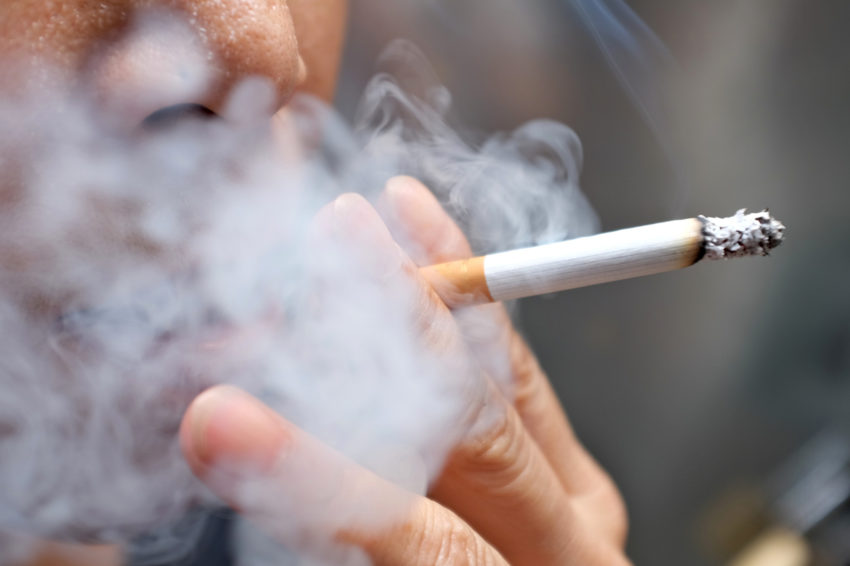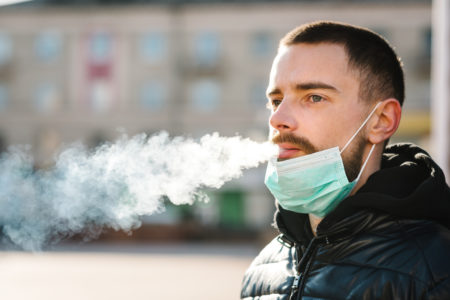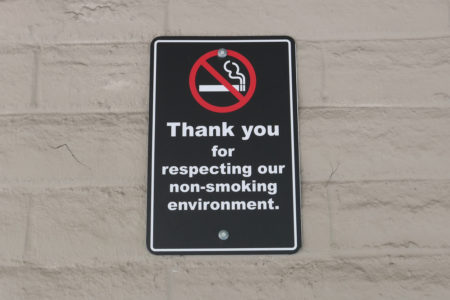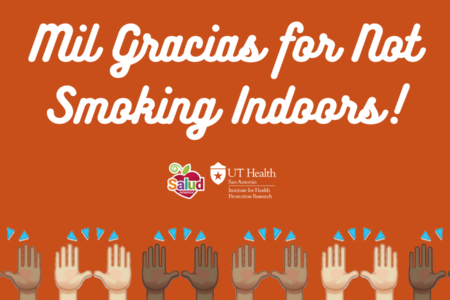
Share On Social!
Secondhand smoke damages people’s health every day, including those who live in or occupy places that allow smoking.
In Horizon City—a suburb outside of El Paso, one of the cities with the state’s highest Latino population (% Latino)—local leaders just banned smoking in public spaces and businesses.
The ban aims to ensure that all who live in the Texas suburb can live without having to breathe in smoke, according to Eva Olivas, the community impact director for the American Heart Association of El Paso and a Horizon City resident.
“When people live and work in a smoke-free environment, they can literally breathe easier because they aren’t being exposed to the diseases and risks that come from secondhand smoke,” she told the El Paso Herald-Post. “Far too many people in Horizon City, especially kids and senior citizens, are at a higher risk for chronic illnesses like heart disease and cancer due to secondhand smoke. That’s why the American Heart Association supports comprehensive smoke-free laws here at the local level in El Paso County.”
New Legislation in El Paso Aims to Protect Against Secondhand Smoke
This ordinance is similar to over 104 pieces of legislation in cities across Texas, including El Paso, Houston and Austin.
Its central goal is to improve public health by protecting those who do not smoke.
“The American Heart Association fully supports the new ordinance in Horizon City,” Olivas told the El Paso Herald-Post. “We believe that everyone has the right to breathe clean air, whether you’re working in an enclosed space like a restaurant or out shopping with your family. Hundreds of thousands of Americans die prematurely each year as a result of smoking or exposure to secondhand smoke, including people here in Horizon City.”
It’s a serious problem, too, especially considering that there is a 25-35% raised risk of developing early-onset heart disease among those who are exposed to secondhand smoke in their home or workplace, according to the CDC.
The American Heart Association, who was a big supporter of the city ordinance, believes that the new legislation will actually benefit local businesses.
This could be achieved through increased sales and also savings in other areas.
“Not only that, but they will often see savings when it comes to lower cleaning costs, lower absenteeism among employees, and increased worker productivity,” Olivas told the El Paso Herald-Post.
Smoke-Free Policies Across the US
It is important to understand why these kinds of ordinances are so critical to ensuring public health.
Secondhand smoke is linked to cancer and heart disease. There is even data to suggest that some forms of exposure are more harmful than other, such as sidestream exposure — a mix of mainstream smoke, the smoke exhaled out by a smoker, and sidestream smoke from the burning tobacco product.
In New York, The Tobacco-Free Schools Initiative gives schools resources that focus on positive reinforcement for tobacco cessation and prevention, rather than traditional forms of punishment.
On the other end of the country, in the city of Crescent City, Calif., residents will no longer be able to smoke in multi-unit housing. A new ordinance, recently passed by the City Council, aims to reduce the harmful toxins non-smokers face when facing secondhand smoke inside their apartments or condos. 
It’s also vital to understand how often people are exposed to this kind of harm.
“Based on several studies, an estimated 44 percent to 53 percent of multi-unit housing residents that do not allow smoking in their home, have experienced secondhand smoke infiltration in their home from elsewhere in or around the building,” according to the American Lung Association.
Smoke-free policies are the only way to prevent exposure to secondhand smoke in multifamily units as well as other public spaces, according to HUD and ChangeLab Solutions.
“Secondhand smoke moves freely in a building, just like water from a flood can travel via elevator shafts, stairwells, HVAC systems, wall outlets and other electrical and plumbing openings. People in apartment buildings have no choice about breathing secondhand smoke,” Dr. Claudia Miller, a professor emeritus and leader of the Hoffman TILT (Toxicant-induced Loss of Tolerance) program at UT Health San Antonio, said.
What Else Can We Do to Promote Clean Indoor Air?
This answer is UT Health San Antonio’s new “Mil Gracias for Not Smoking Indoors!” campaign.
The Mil Gracias campaign is led by a group of local health experts: Dr. Amelie G. Ramirez, health disparities researcher and director of Salud America! at UT Health San Antonio; Dr. Claudia Miller, allergist/immunologist and professor emeritus at UT Health San Antonio; and Dr. Mandie Svatek, a pediatrician at UT Health San Antonio who leads the South Texas Asthma Coalition.
At the campaign website, you can take three big actions:
- Email a “thank you” message to a smoker for not smoking indoors to keep our families healthy.
- Sign a letter to acknowledge the harms of secondhand smoke exposure.
- Share the benefits of reducing secondhand smoke in multifamily dwellings.
“Smokers have the power to slow the spread of COVID-19 by taking it outside and away from people, protecting them from the known secondhand smoke dangers and the possibility of coronavirus airborne transmission,” Ramirez said. “Smokers who do not smoke indoors deserve our thanks.”
Mil Gracias aims to help people understand the dangers of secondhand smoke and take action to prevent any possible spread of the coronavirus and other tobacco-related health problems, Miller said.
“Most know that smoking harms the smoker, but few realize there is solid research linking secondhand smoke to asthma, SIDS, COPD, recurrent ear and pulmonary infections, many cancers, and, potentially, COVID-19,” Miller said. “The personal, social, and financial costs of secondhand smoke are incalculable.”
Quitting smoking isn’t easy, as nicotine is addictive.
But the impact is immediate.
“Quitting will help your lungs and heart to work better from the moment you stop. Within 20 minutes of quitting, elevated heart rate and blood pressure drop. After 12 hours, the carbon monoxide level in the bloodstream drops to normal,” according to the World Health Organization (WHO). “Within 2-12 weeks, circulation improves and lung function increases. After 1-9 months, coughing and shortness of breath decrease. Quitting will help to protect your loved ones, especially children, from exposure to second-hand smoke.”
The best way for someone to protect themselves and others is by quitting smoking.
You can get help from the free Quitxt Program from Ramirez’ team at UT Health San Antonio.
The Quitxt program, developed with the support of the Cancer Prevention and Research Institute of Texas, is a bilingual service for smartphones that sends messages via text or Facebook Messenger to help coach and encourage people on the journey toward smoking cessation.
Also, download the Salud America! Action Pack “Help Your City Adopt Smoke-Free Multifamily Housing!”
The action pack will help you engage local leaders in exploring a smoke-free multifamily housing policy for common areas and individual units.
“Experts say a smoke-free multifamily housing policy can protect the health of tenants and staff of apartments from secondhand smoke, as well as save property owners money in unit maintenance, fire prevention, insurance, and reduced legal liability,” said Dr. Amelie G. Ramirez, action pack creator and director of the Salud America! Latino health equity program at UT Health San Antonio.
Explore More:
Chemical & Toxic ExposureBy The Numbers
1
Quick Survey
Can help you find out how chemically sensitive you are



